Last Updated on December 7, 2024 by Steve
Three days and three nights
There is something really important that needs to be cleared up with the timetable concerning the ‘passion week’ starting with when Jesus entered Jerusalem on a donkey on Palm Sunday to when He died on a Thursday afternoon and rose early while still dark on the following Sunday morning. That’s right! You read it correctly. He died on Thursday afternoon, specifically on the 6th of April AD 30. And the confusion surrounding the timing of events all has to do with the common misconception that there was only one Sabbath Day that fateful week being the normal weekly Sabbath Day—Saturday. However, the Bible clearly tells us that there was a High Sabbath as well, meaning a completely separate day. This completely clears up the problem that we have in trying to fit three days and three nights between Good Friday and Easter Sunday. In my view, it should be Good Thursday to Easter Sunday.
Jesus gave the sign of Jonah saying that the Son of Man would be in the heart of the earth (grave) for three days and three nights.1 Now many Biblical scholars say that Hebrew thinking is that a part of one day can be counted for a whole.
The argument for a Friday crucifixion
If one holds to the theory that Jesus died on a Friday (Good Friday) then He was in the grave for three days (part of Friday afternoon, Saturday, and part of Sunday). There are a couple of major problems though. The first one being that you can still only count two nights (Friday and Saturday) so that would be in violation of what Jesus said in Matt. 12:40 where He would be in the grave for three nights. The second problem is that John 20:1 tells us that “on the first day of the week Mary Magdalene went to the tomb early, while it was still dark, and saw that the stone had been taken away from the tomb.” So it is likely that Jesus rose before sunrise and we know that the Jewish day commences at sunrise.
The principal arguments for a Friday crucifixion are tradition and also Mark 15:42 which states that Jesus was crucified on the Preparation Day, the day before the normal weekly Sabbath. Of course, this is assuming that Mark is talking about the normal weekly Sabbath but one has to consider from Leviticus 23 that there were seven other holy days that were considered to be Sabbath days as well—high Sabbaths. The normal weekly Sabbath was always on a Saturday or the seventh day of the week but the seven other “Sabbath” days could fall on any day of the week much like many of our holidays that fall on specific dates, not a specific day. Despite this widely held view that Friday was the day that Jesus was crucified one still cannot fit three nights between Friday and Sunday morning any way you look at it.
The argument for a Wednesday crucifixion
A Wednesday afternoon crucifixion solves a couple of problems but introduces others. This view is widely held by the United Church of God and some other cults.2 The problem with this view is that you come up with four days and four nights instead of three days and three nights. It does solve the aromatic spice conundrum which says in Luke 23:56 that the women after seeing Jesus’ body in the tomb went home and prepared spices and perfumes yet in Mark 16:1 it says that the women bought spices after the Sabbath. The Wednesday solution holds that Thursday was a High Sabbath, Friday was a normal day and then Saturday was the weekly Sabbath. So in effect, Mark 16:1 is correct in that the women bought the spices on the Friday after the High Sabbath since it was prohibited to buy anything on the Sabbath (High or weekly). Luke 23:56 is not violated either with this view because the women went home on the Wednesday afternoon, rested on the Thursday High Sabbath, bought and prepared spices on the Friday, and went to the tomb that same day and treated Jesus’ body. This view is correct in believing that there are two different Sabbaths whereas the Friday crowd holds the view that the weekly Sabbath that year was a High Sabbath as well. In other words, the High Sabbath fell on a Saturday. But when reading Luke 23:55–56 the natural reading of it seems to me to indicate that the women followed Joseph straight away after he took Jesus’ body off the cross as they wanted to see where Jesus’ body would be laid. It says in the Greek, “having returned, they prepared spices and perfumes…” indicating that the act of preparing spices immediately followed their return that afternoon not a full day later. The alternative seems to be an unnatural reading and forcing of the grammar. Even though the Wednesday theory seems to not violate the account of the women and the spices, there could be a much better explanation that I think is afforded by another theory–the Thursday crucifixion theory which I will explain in the next section.
Another problem with the Wednesday theory is that the Passover lamb was examined and separated for four days from Nisan 10–14.3 What was the purpose of this delay? It was to make sure that there was no blemish in the paschal lamb. It had to be perfect and we know that Jesus was the ultimate Passover Lamb who was perfect without sin. We definitely know that Christ was crucified on Nisan 14 so counting back from a possible Wednesday crucifixion that means that Palm Sunday would fall on Saturday or the Jewish Sabbath. Now that is impossible. Jesus’ triumphal entry would have occurred on the 1st day of the week–Sunday. And that perfectly fits in with a Thursday crucifixion.
One more problem. On the road to Emmaus in Luke 24:21 on Resurrection Sunday in the late afternoon, two disciples of Jesus were walking and talking to Jesus and telling Him that it was now the third day since all these things had taken place. What things? The death of Jesus on the cross! So if that same day, Sunday afternoon, was the third day since Jesus had died then Saturday would have been the second day since He had died and Friday would have been the first day. Logically that leaves Thursday as the very day that Jesus was nailed to the cross, specifically Thursday 6th April AD 30. That also fits in perfectly with astronomical data too as this year was the only year from AD 26–34. that the Passover on Nisan 14 fell on a Thursday and when a full moon occurred.4 The full moon occurred exactly on the Thursday night 6th April AD 30 at 7:43 pm.5 It didn’t occur the night before on Wednesday or on the night after on Friday night. Jesus was buried on the night of a full moon–how appropriate!
The argument for a Thursday crucifixion
All the numbers, the astronomical data, the difficult spice problem, the two Sabbaths all work for a Thursday crucifixion. So this is how it goes: Six days before the Passover on Erev Shabbat (Friday night meal before Sabbath) a dinner was given in Jesus’ honour.6 Then the next day7 on Sunday morning Jesus enters into Jerusalem on a donkey and is worshipped on Nisan 10. On Nisan 14 evening (Wednesday night) the Last Supper takes place when Jesus is betrayed. Early Thursday morning at 6 am (the sixth hour) John states that Jesus’ trial nears completion. John says the sixth hour whereas Mark says that Jesus was crucified at the third hour.8 The apparent contradiction is resolved if we understand that John used Roman time while Mark uses Jewish time. The Roman day began at midnight and the Jewish day began at sunrise. So the third hour in Mark’s reckoning is around 9 am when Jesus was nailed to the cross. Then Jesus dies at 3 pm on Thursday, is buried before sunset and the new day begins which is important because the High Sabbath is about to begin.9 So Friday and Saturday were consecutive Sabbaths, one special and the next the normal weekly Sabbath. Early Sunday morning before sunrise Jesus rises from His grave.
The sequence of events: Thursday day 3–6 pm (1st day), Thursday night (1st night), Friday day (2nd day), Friday night (2nd night), Saturday day (3rd day), Saturday night (3rd night), Jesus rises early Sunday morning before sunrise before the 4th day begins. There we have it—it completely fulfills the sign of Jonah!
So what about the spice problem? The conundrum is solved by realising that Mary and the women had prepared some spices immediately but must have bought some more on the Saturday night market after the Sabbath was over. What John 19:39 tells us that none of the other Gospels tell us is that Joseph of Arimathea was accompanied by Nicodemus and some 34 kg of spices to tide them over for a day or two until the women could bring more. The thing to be careful about is that we are not given all the information in one Gospel account. We have to put the picture together from different accounts. Sure there are some assumptions made with every argument but the Thursday crucifixion seems to be the most logical and has the least number of problems.
Two Sabbaths
Conclusion
- Matt. 12:39–40 [↩]
- https://www.ucg.org/the-good-news/jesus-wasnt-crucified-on-friday-or-resurrected-on-sunday-how-long-was-jesus-in-the [↩]
- Exo. 12:3,6 [↩]
- http://jesus-messiah.com/html/passover-dates-26-34ad.html [↩]
- http://astropixels.com/ephemeris/phasescat/phases0001.html [↩]
- John 12:1 [↩]
- Sabbath starts Friday night and ends on Saturday night so the next day is literally Sunday [↩]
- Mark 15:25 [↩]
- John 19:31 [↩]
- ISV, YLT, Berean Literal Bible translate this correctly. [↩]
- Jesus began announcing His departure and was “cut off” in a sense six months before His crucifixion during the fall feasts of AD 29. See Dan. 9:26 NKJV, John 7:1-10:21, Hosea 5:15. [↩]




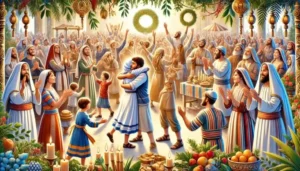
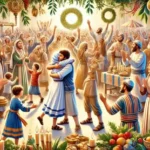
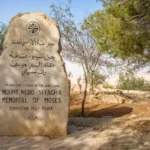







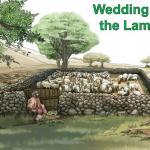
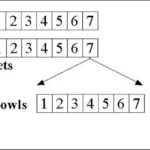
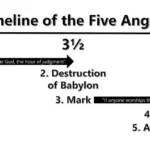
4 Responses
Thursday is correct ?
100% again agree. Shared on Twitter! Thanks for all you do and getting the truth out there.
So I guess that we should say Good Thursday
Hi Ed,
Yes, That’s what I think too.